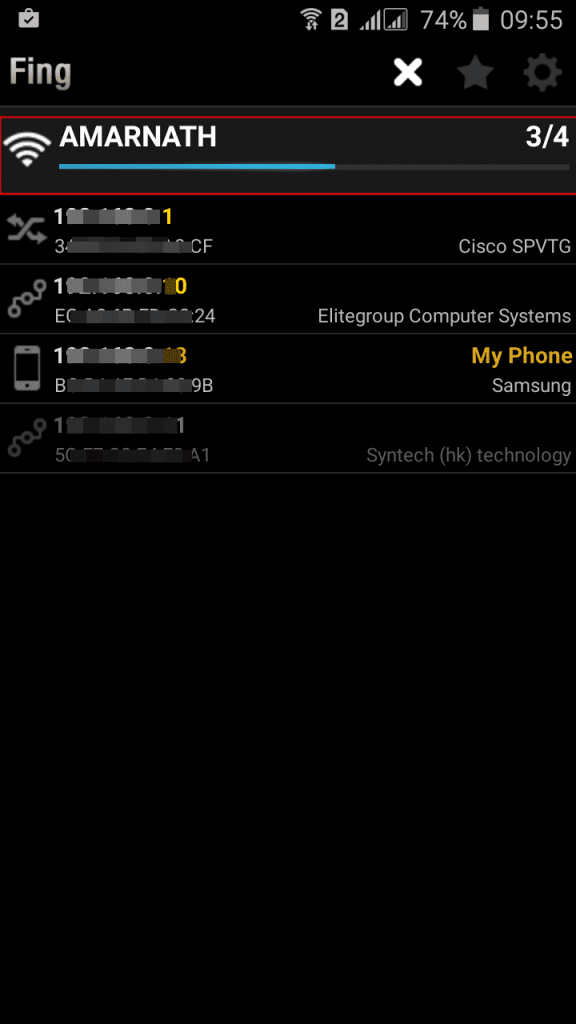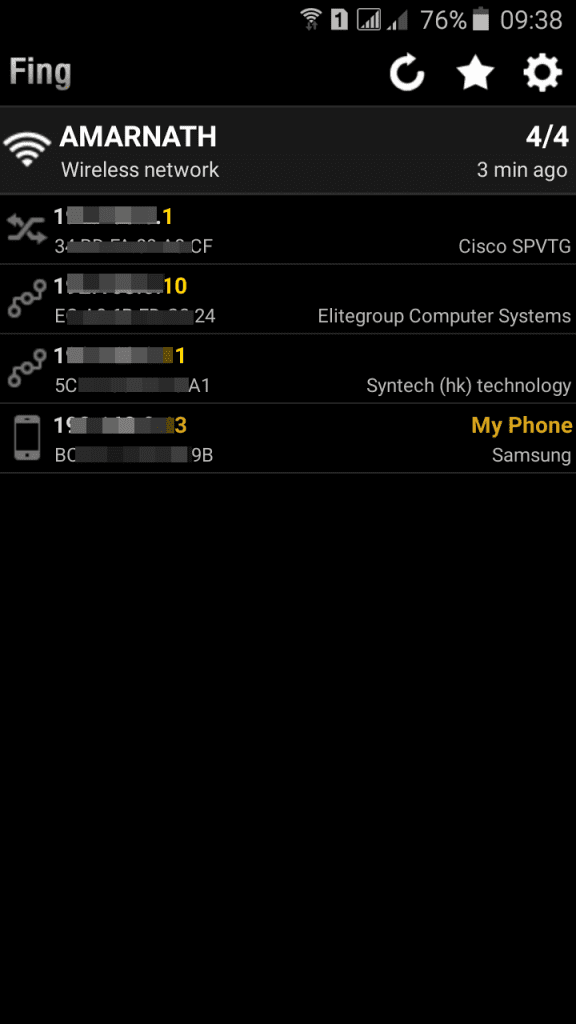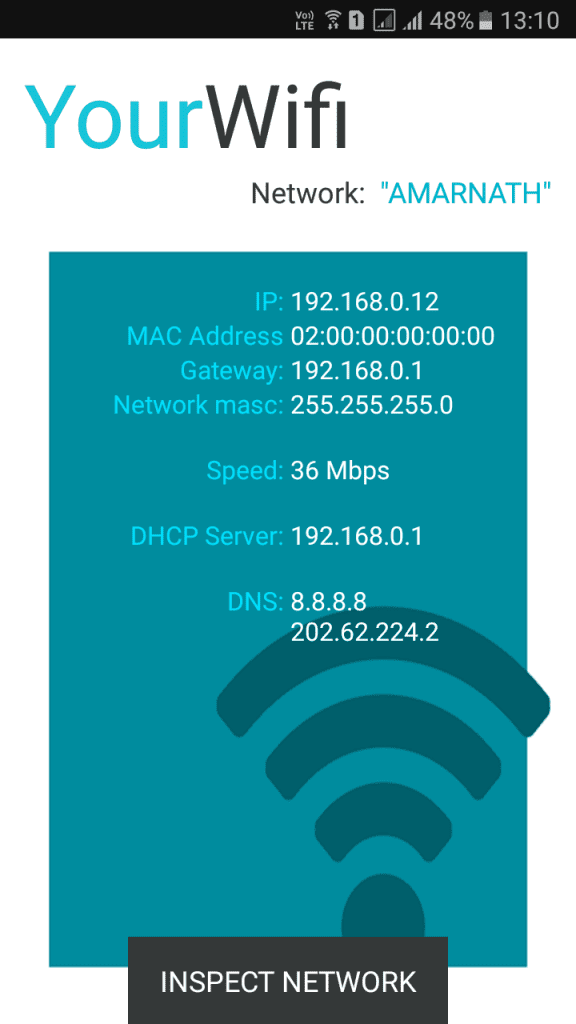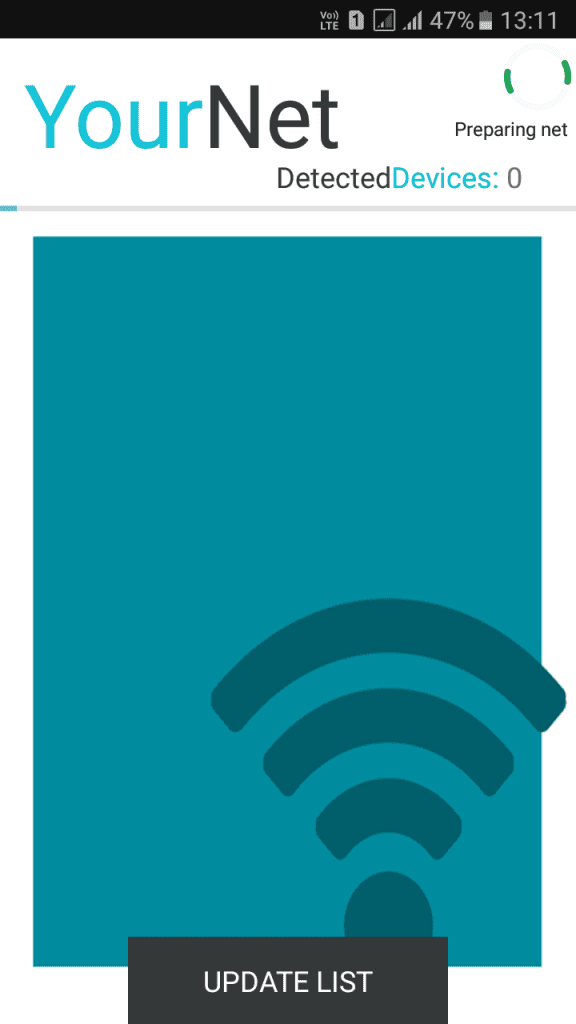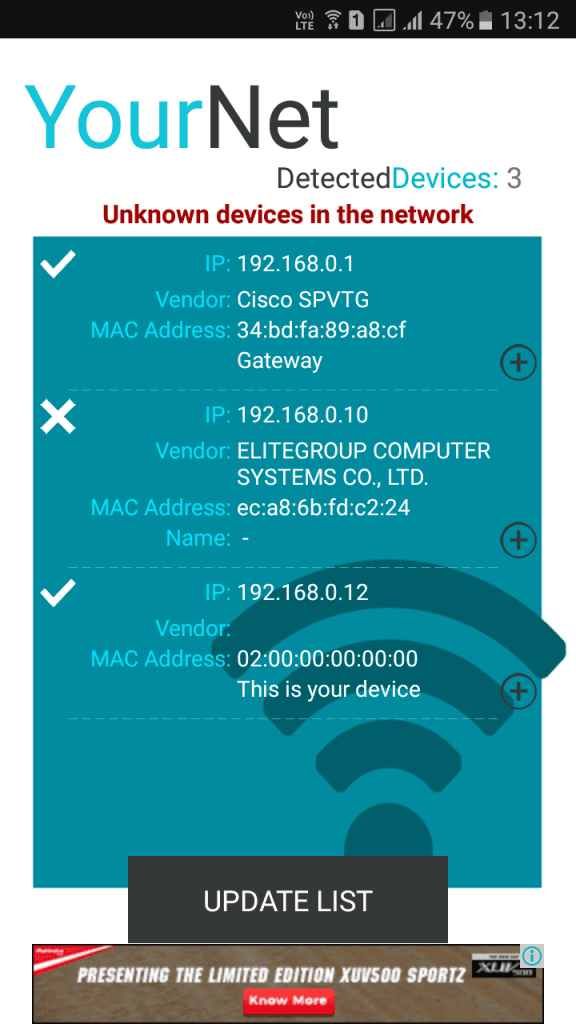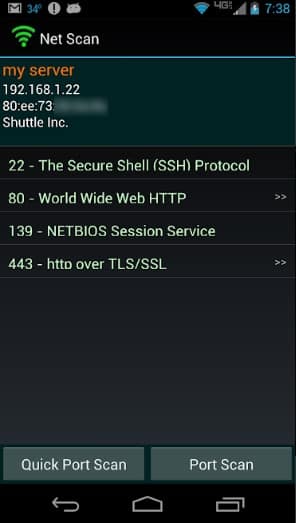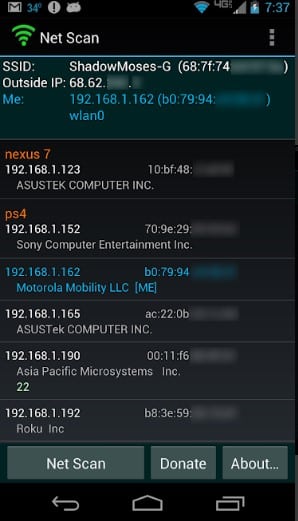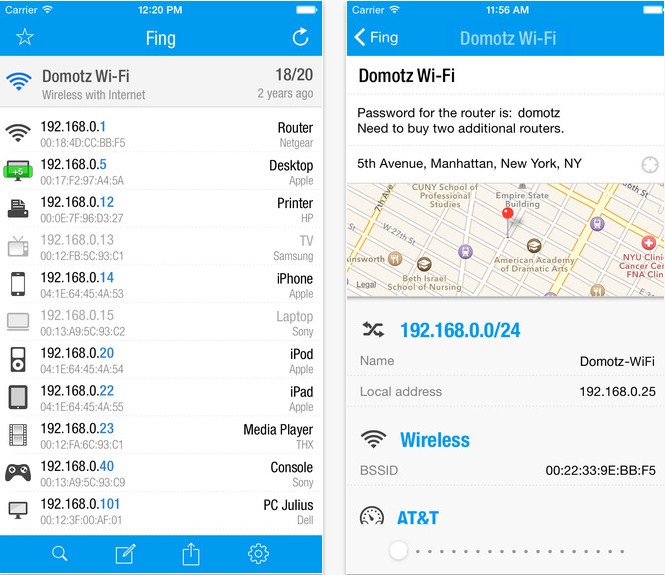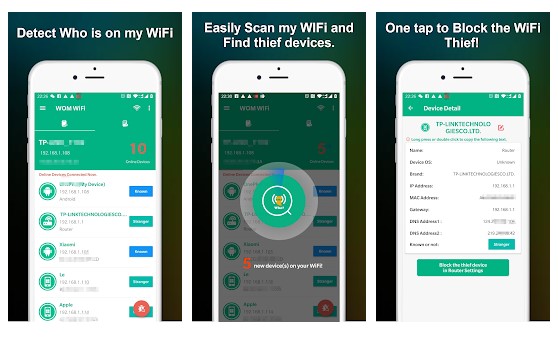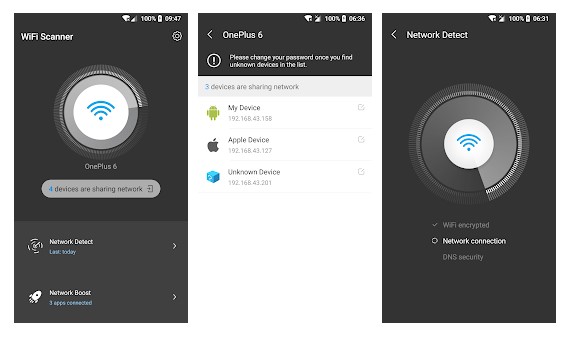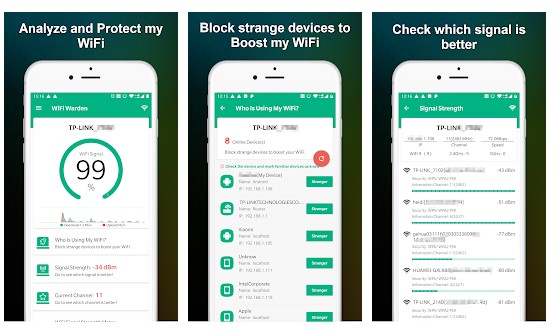- How To Find Devices Connected To Your Wifi Using Smartphone
- How To Find Devices Connected to your Wifi using Smartphone
- 1. Using Fing – Network Tools
- Using Wifi Inspector
- Using NetScan
- 2. Scanning Connected Devices On iPhone
- Some other apps that you can use
- 1. Who is on my WiFi
- 2. WiFi Scanner & Analyzer
- 3. WiFi Warden
- How to Find What Devices are Connected to Network in Linux
- A. Using Linux command to find devices on the network
- Step 1: Install nmap
- Step 2: Get IP range of the network
- Step 3: Scan to find devices connected to your network
- B. Using GUI tool to find devices connected to network
How To Find Devices Connected To Your Wifi Using Smartphone
Let’s admit; the internet has become a part of our lives. These days, we can’t survive without an internet connection. The increased usage of the internet on smartphones has also given rise to WiFi networks. These days, you will find WiFi networks everywhere, like on Office, Movie theaters, Shopping malls, etc.
Even we all have WiFi connectivity at home and workplace. If you have a personal WiFi, then we are pretty sure that you might have dealt with slow internet speed. The sudden slowdown of internet speed indicates that someone might be using your WiFi network. Most of the modern routers allow users to check for connected devices. However, if you don’t know how to use the router admin panel, then you can rely on the apps.
How To Find Devices Connected to your Wifi using Smartphone
There were quite a few Android apps available on the Play Store that lets you find devices connect to the WiFi network. In this article, we are going to share a few best methods that would help you find devices connected to your WiFi using a smartphone.
1. Using Fing – Network Tools
For those who don’t know, Fing is a complete network tool available for Android. With FING, you can analyze any WiFi network. Not only that, but the app also helps you to find devices that were connected to the WiFi.
Step 1. First of all, in your Android device, download and install the app Fing – Network Tools. After installing the app, launch it on your Android device.
Step 2. Now simply scan all the devices that were currently connected to the same wifi network.
Step 3. Now a list of devices will get displayed that are being currently using the same wifi network.
Step 4. You can know details about the connected WiFi devices by tapping on them
That’s it! You are done, now you can check the Mac address of a device and can block it on your router.
Using Wifi Inspector
This is another app that serves the same as Fing. Wifi Inspector is a simple tool to see all the devices connected to the network (both wired and wifi, whether consoles, TVs, pcs, tablets, phones, etc.) are giving relevant data such as IP address, manufacturer, device name and MacAddress.
Step 1. First of all, download and install the app WiFi inspector on your Android device and launch it.
Step 2. Now it will show you the network. Just tap on “Inspect Network” to continue.
Step 3. Now it will scan for the devices that are connected to your WiFi network.
Step 4. Now it will show you the entire list of devices connected to your wifi network.
That’s it! You are done, you can now block the devices by going through your router settings.
Using NetScan
NetScan is another networking scanning tool that’s available on the Google Play Store. The great thing about NetScan is that it can discover connected devices by scanning the port. Not just that, but NetScan can also help you to find network loopholes, vulnerabilities, and open ports.
Step 1. First of all, visit Google Play Store and download NetScan. You can use this link to download & install the app directly.
Step 2. Once done, open the app and grant all permissions.
Step 3. Now, you will see an interface like below. Here you need to tap on the ‘Port Scan’
Step 4. Now NetScan will scan for the connected devices and will list out the devices.
Step 5. If you want to grab details of the connected device, then simply tap on it to get a brief overview.
That’s it, you are done! This is how you can use NetScan to find devices connected to your WiFi on Android.
2. Scanning Connected Devices On iPhone
Step 1. First of all, on your iOS device, download and install the app Fing – Network Tools. After installing the app, launch it on your iPhone.
Step 2. Now simply scan all the devices that are being currently connected to the same wifi network.
Step 3. Now a list of devices will get displayed that are being currently using the same wifi network.
That’s it! You are done, now you can check the Mac address of a device and can block it on your router.
Some other apps that you can use
Just like the above apps, other apps for the same purpose exists. Below, we have shared three best apps to scan devices connected to the WiFi network.
1. Who is on my WiFi
As the name of the app says, Who is on my WiFi is one of the best WiFi scanner app available on the Play Store. The app was mostly known for its attractive user interface. The app effectively scans and finds devices that were connected to the WiFi network.
2. WiFi Scanner & Analyzer
As the name of the app says, WiFi Scanner & Analyzer is another best and top-rated WiFi scanner app on the list. The app serves as a smart way to list all devices that were connected to the personal WiFi hotspot. Apart from that, it also got a network speed test tool that accurately measures your network speed.
3. WiFi Warden
It’s another best WiFi scanner app on the list that can be used to analyze the WiFi network. The Android app tells you about the WiFi signal strength around you. Not only that, but it also tells about the devices that were connected to the WiFi network.
So, these are some of the best WiFi scanner apps available on the Play Store. You can use these apps to find devices that were connected to the WiFi network.
So above is all about How To Check Devices Connected To Your Wifi Using Your Smartphone. I hope you like this, do share it with others too. Leave a comment below if you have any related queries with this.
How to Find What Devices are Connected to Network in Linux
Wireless networks have always been a desirable target for wannabe hackers. Wireless networks are also more vulnerable to hacking than the wired ones.
Forget hacking, do you ever wonder that someone might be leeching off your hard paid wifi network? Maybe a neighbor who once connected to your network and now uses it as his/her own?
It would be nice to check what devices are on your network. This way you can also see if there are some unwanted devices on your network.
So you might end up thinking, “how do I find what devices are connected to my network”?
I’ll show you how to do that in this quick tutorial. Not only it’s a good idea from security point of view, it is also a good little exercise if you have interest in networking.
We will use both, command line and GUI, way for finding out what devices are connected to your local network in Linux. The process is very simple and easy to use even for beginners.
Before you see any of that, let me tell you that your router should also be able to show all the connected devices. Check your gateway ip address and then type it in a browser. This is usually the browser interface for your router. Enter the username and password and you can see all the details and devices connected to the router.
If you don’t remember the router password or you don’t want to go that way, here’s what else you could do.
A. Using Linux command to find devices on the network
Step 1: Install nmap
nmap is one of the most popular network scanning tool in Linux. Use the following command to install nmap in Ubuntu based Linux distributions:
You can easily install it in other Linux distributions as well. It should be in the official software repository.
Step 2: Get IP range of the network
Now we need to know the IP address range of the network. Use the ifconfig command to find the IP address in Linux. Look for wlan0 if you are using wifi or eth0 if you are using Ethernet.
[email protected]:~$ ifconfig
wlan0 Link encap:Ethernet HWaddr 70:f1:a1:c2:f2:e9
inet addr:192.168.1.91 Bcast:192.168.1.255 Mask:255.255.255.0
inet6 addr: fe80::73f1:a1ef:fec2:f2e8/64 Scope:Link
UP BROADCAST RUNNING MULTICAST MTU:1500 Metric:1
RX packets:2135051 errors:0 dropped:0 overruns:0 frame:0
TX packets:2013773 errors:0 dropped:0 overruns:0 carrier:0
collisions:0 txqueuelen:1000
RX bytes:1434994913 (1.4 GB) TX bytes:636207445 (636.2 MB)
The important things are highlighted in bold. As you see my IP is 192.168.1.91 and the subnet mask is 255.255.255.0 which means that the ip address range on my network varies from 192.168.1.0 to 192.168.1.255.
You may also use ip a command to know your IP address in Ubuntu and other Linux distributions.
At the same time, I’ll recommend you to read about basic Linux networking commands for more information.
Step 3: Scan to find devices connected to your network
It is advisable to use root privileges while scanning the network for more accurate information. Use the nmap command in the following way:
[email protected]:~$ sudo nmap -sn 192.168.1.0/24
Starting Nmap 5.21 ( http://nmap.org ) at 2012-09-01 21:59 CEST
Nmap scan report for neufbox (192.168.1.1)
Host is up (0.012s latency).
MAC Address: E0:A1:D5:72:5A:5C (Unknown)
Nmap scan report for takshak-bambi (192.168.1.91)
Host is up.
Nmap scan report for android-95b23f67te05e1c8 (192.168.1.93)
Host is up (0.36s latency).
As you can see that there are three devices connected to my network. The router itself, my laptop and my Galaxy S2.
If you are wondering about why I used 24 in the above command, you should know a little about CIDR notation. It basically means that the scanning will be from 192.168.1.0 to 192.168.1.255.
B. Using GUI tool to find devices connected to network
When I first wrote this article, there was no GUI tool for this task. Then I came across a new network monitoring tool being developed for elementary OS. I suggested including a periodic device scan feature in this tool and the developer readily agreed.
So, now we have a GUI tool that does this task. It’s called Nutty (last updated in 2019). Just install this app and run it. It will periodically scan for new devices on the network and will notify you if there is a new device.
This application is only available for elementary OS, Ubuntu and hopefully, other Ubuntu based Linux distributions. You can find installation instructions on this detailed article on Nutty.
Oh, you can also log in to your router and see the devices connected to your devices. I let you figure the best way to find devices connected to your network.

